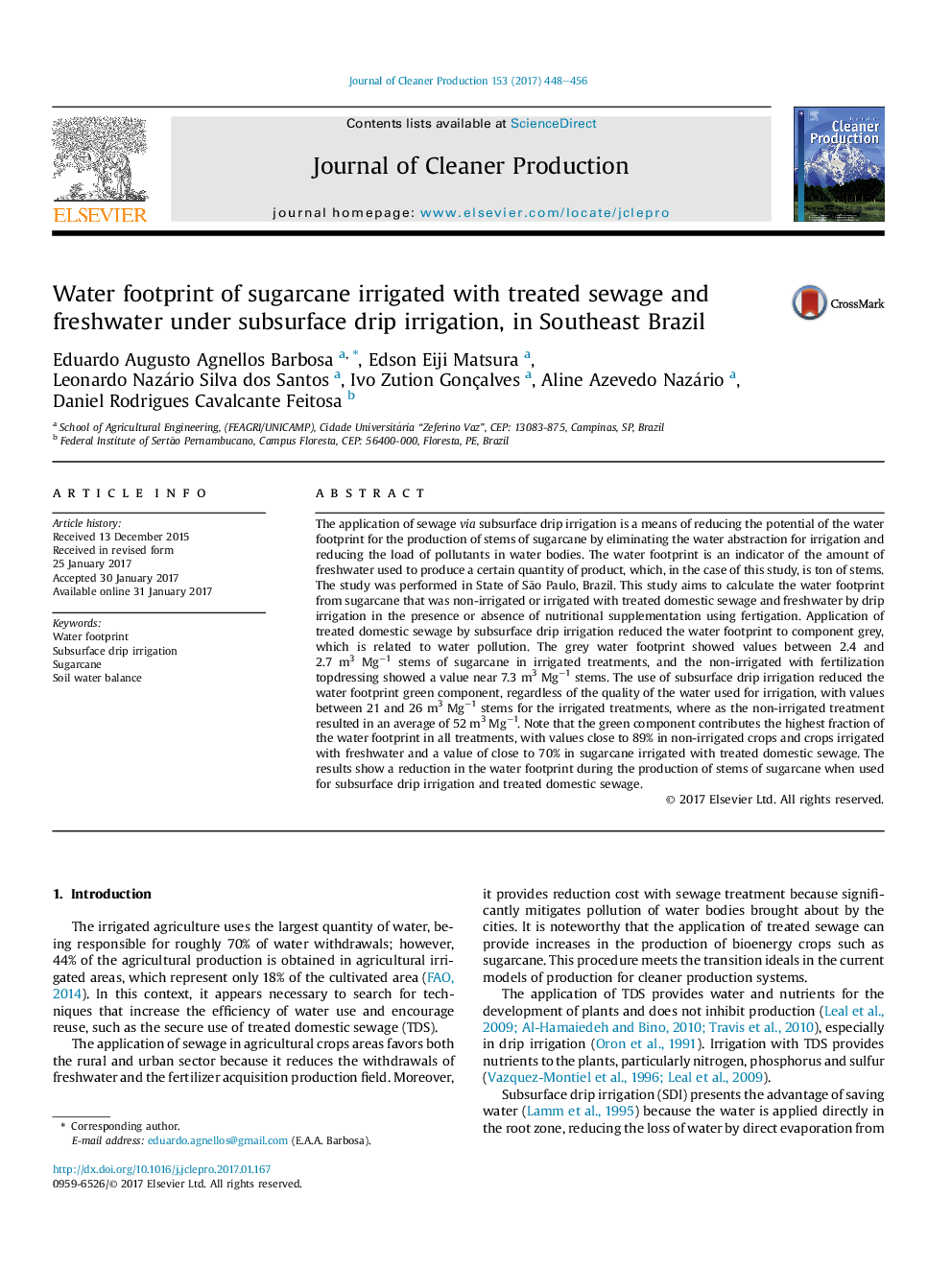| کد مقاله | کد نشریه | سال انتشار | مقاله انگلیسی | نسخه تمام متن |
|---|---|---|---|---|
| 5479655 | 1522100 | 2017 | 9 صفحه PDF | دانلود رایگان |
- We inventory water consumption on irrigated sugarcane crop.
- We compared irrigation with fertilized and not fertilized greywater.
- The use of SDI irrigation raised the stem yield our samples.
- The fertigation reduces the N losses by leaching.
The application of sewage via subsurface drip irrigation is a means of reducing the potential of the water footprint for the production of stems of sugarcane by eliminating the water abstraction for irrigation and reducing the load of pollutants in water bodies. The water footprint is an indicator of the amount of freshwater used to produce a certain quantity of product, which, in the case of this study, is ton of stems. The study was performed in State of São Paulo, Brazil. This study aims to calculate the water footprint from sugarcane that was non-irrigated or irrigated with treated domestic sewage and freshwater by drip irrigation in the presence or absence of nutritional supplementation using fertigation. Application of treated domestic sewage by subsurface drip irrigation reduced the water footprint to component grey, which is related to water pollution. The grey water footprint showed values between 2.4 and 2.7 m3 Mgâ1 stems of sugarcane in irrigated treatments, and the non-irrigated with fertilization topdressing showed a value near 7.3 m3 Mgâ1 stems. The use of subsurface drip irrigation reduced the water footprint green component, regardless of the quality of the water used for irrigation, with values between 21 and 26 m3 Mgâ1 stems for the irrigated treatments, where as the non-irrigated treatment resulted in an average of 52 m3 Mgâ1. Note that the green component contributes the highest fraction of the water footprint in all treatments, with values close to 89% in non-irrigated crops and crops irrigated with freshwater and a value of close to 70% in sugarcane irrigated with treated domestic sewage. The results show a reduction in the water footprint during the production of stems of sugarcane when used for subsurface drip irrigation and treated domestic sewage.
Journal: Journal of Cleaner Production - Volume 153, 1 June 2017, Pages 448-456
